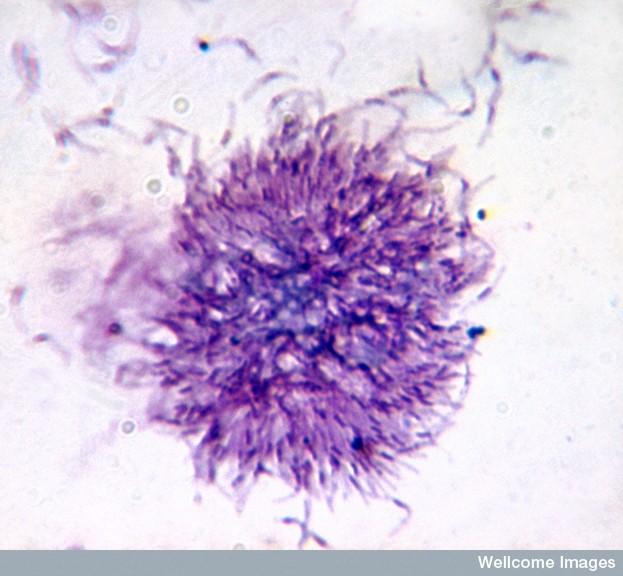Vivax Haematology Study Group
Vivax Haematology Study Group

Analysis of the consequences of symptomatic Plasmodium vivax infections on anaemia before and after antimalarial treatment
The Vivax Haematology Study Group was formed in April 2016, with an invitation to interested researchers. Data gathering and curation are now complete. Statistical analysis for patients treated with chloroquine +/- primaquine is nearing completion and a manuscript is expected to be submitted for publication in early 2018. Analysis of patients treated with artemisinin combination therapies has commenced and was completed in 2018. This study group is now completed with the publication of: 'The haematological consequences of Plasmodium vivax malaria after chloroquine treatment with and without primaquine: a WorldWide Antimalarial Resistance Network systematic review and individual patient data meta-analysis' in BMC Medicine August 1, 2019.
There is increasing evidence that P. vivax results in significant morbidity and associated mortality. A significant proportion of this morbidity is attributable to severe anaemia from recurrent P. vivax infections, where each relapse results in an increased cumulative risk of anaemia. Malaria-associated anaemia is a complex phenomenon, related to increased red cell destruction and haemopoeitic suppression, compounded by nutritional status, helminth carriage and drug induced haemolysis. The degree of anaemia caused by vivax malaria and its risk factors has not been evaluated widely. [1]
Control and ultimate elimination of P. vivax requires the safe and effective prevention of recurrent infections and this requires radical cure targeting both blood and liver stages of the parasite. However, the only widely available drug which is active against the liver stages is primaquine which can cause drug-induced haemolysis in glucose-6-phosphate dehydrogenase (G6PD) deficient patients. In order to quantify the risks and benefits of P. vivax radical cure, it is crucial to determine the normal haematological response following P. vivax infection and treatment.
- To quantify the acute reduction in haemoglobin before and after treatment that is associated with acute vivax malaria
- To quantify the reduction in haemoglobin associated with recurrent vivax malaria
- To assess independent risk factors associated with anaemia at the start of treatment for acute and recurrent vivax malaria.
- To assess risk factors associated with the development of anaemia during follow-up phase with and without primaquine
- To assess the time to recovery from anaemia after administration of chloroquine and compare this with non-chloroquine treatments
- To assess the effect of primaquine mg/kg dose on haemoglobin reduction and time to anaemia recovery.
- Prospective clinical efficacy studies of uncomplicated vivax malaria:
- Information on use, timing and dose of drug administration. All prospective treatment studies can contribute valuable information on the haematological response, particularly clinical studies comparing schizontocidal treatment with and without primaquine.
- Haemoglobin (hb) or hematocrit (hct) or red blood count (RBC) measured on day 0 and subsequent visits
- Study meta-data as described in the Clinical Data Management and Statistical Analysis Plan
- Baseline data on patient age and gender
- Mg/Kg dosing
- Weight of the patient
- Information on splenomegaly, hepatomegaly
- Malnutrition as gauged by weight and age +/- height or MUAC
- Full blood count
- Qualitative or quantitative assessment of G6PD status
- Information on previous vivax episodes
A detailed P. vivax haematology statistical analysis plan has been developed.
After data have been uploaded to the WWARN Data Repository, the data was standardised according to the WWARN Clinical Data Management and Statistical Analysis Plan and pooled into a single database of quality-assured individual patient data. Haematocrit measurements were converted to a haemoglobin concentration and anaemia defined as haemoglobin <10g/dL and severe anaemia as haemoglobin <7g/dL. The time to haematological recovery will be assessed in a variety of subanalyses. Normal haemoglobin values for each sub-group will be determined and this value will be used to calculate the fractional fall in haemoglobin before and after treatment. In particular, the role of primaquine mg/kg dosing and timing, and its effect on increasing haemolysis and haematological recovery will be reviewed in a subset of patients with primaquine treatment after controlling for known confounding factors.
The Vivax Haematology Study Group comprises participating investigators who contribute relevant data sets to the pooled analysis. Data sets will remain the property of the investigator and will not be shared without their consent. The WWARN statistician(s) will oversee the statistical analyses. The Study Group collectively makes decisions with respect to inclusion of additional studies, and plans for publication. Participating investigators will be recognised in publication as contributors under the banner of the Vivax Haematology Study Group. The Study Group will assign a Writing Committee to coordinate activities including data analysis, and drafting of publications and reports for complete group review. The Writing Committee will comprise a group of interested investigators undertaking the data analysis and preparation of the manuscript. Authors will be recognized according to the ICMJE guidelines and the WWARN publication policy.
For further information, please contact Rob Commons on email: clinical@wwarn.org
Robert J. Commons, Julie A. Simpson, Ric N. Price. The haematological consequences of Plasmodium vivax malaria after chloroquine treatment with and without primaquine: a WorldWide Antimalarial Resistance Network systematic review and individual patient data meta-analysis. BMC Medicine. August 1, 2019.



